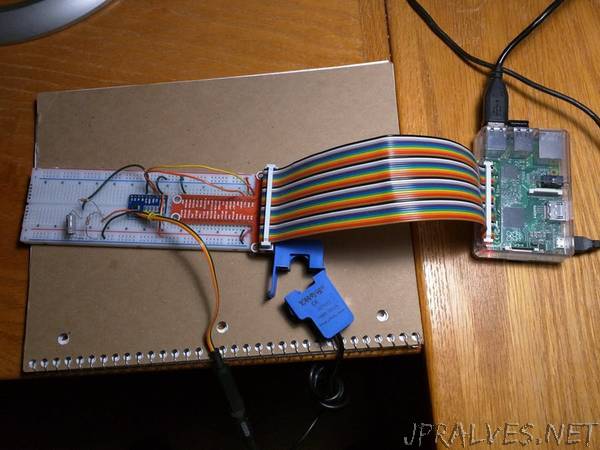
“Turn a Raspberry Pi into a home energy monitor with inexpensive components.
Background
This project got it’s start because my local electric utility has started offering time of day rates. If you sign up, you get cheaper rates overnight and pay more during peak hours.
The problem is I have no idea how much power I use by the time of day.
There are expensive commercial solutions out there but I thought, maybe I can build my own using a Raspberry Pi I had laying around.
There are several similar projects on Hackster.io. Most are Arduino-based but there are a couple of Raspberry-pi based:
https://www.hackster.io/samuelphy/energy-meter-logger-6a346
https://www.hackster.io/ControlEverything/energy-monitoring-through-a-raspberry-pi-190a2a
Requirements
Here are the requirements I set out for the project:
- Measure household electrical energy (in amps and kilowatts) at least once per minute.
- Measure the current passively. That is, I don’t want to have to disconnect any wiring to hook my system up.
- Open source hardware and software.
- Show the most recent power reading
- Show power as a function over the last 24 hours
- Show power averaged by the hour of the day
- Show power used in time buckets that correspond to my utility’s TOD usage plan.
- Be visible on my phone or a browser from anywhere
- The web application should be secure (use SSL, hash passwords, secure login tokens, etc).
- The web application should be small enough to run on the free tier of the popular cloud service providers.
- Be expandable to measure other things in the future
Safety
This project means connecting things inside the power panel in your home. It almost goes without saying: Working with electricity improperly can result seriously injury or death.
The decision to be safe is yours and yours alone. If you are not sure you have the skills and experience to do this, a licensed electrician would be a great idea.
Skills Needed
- A basic working knowledge of AC/DC circuits.
- How to use a breadboard and, if you decide to commit this to a soldered prototype board, how to solder.
- How to use a digital multi-meter.
- Basic Raspberry Pi skills (including the ability to install software).”
